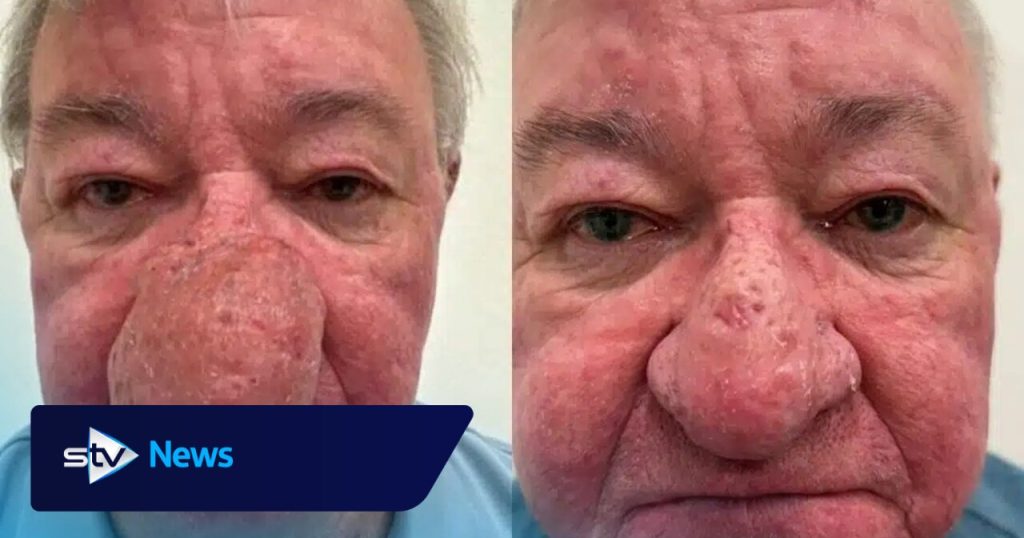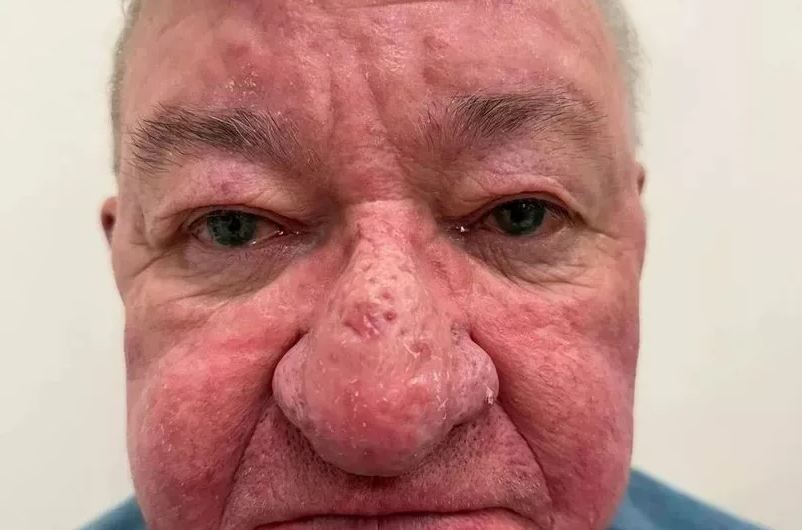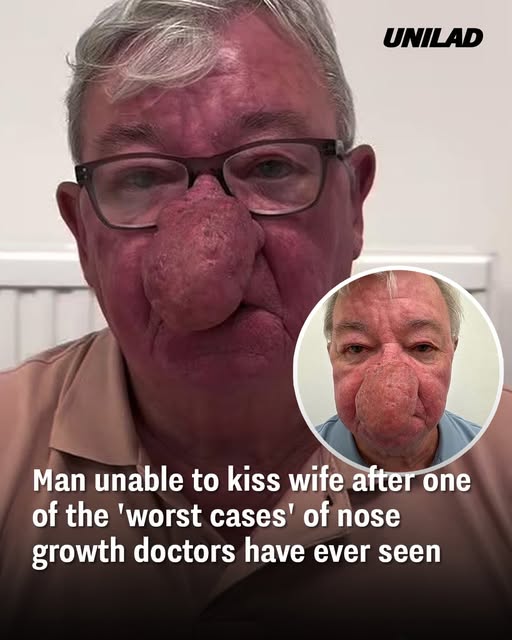A man in his 30s has undergone life-changing surgery to remove a large and abnormal growth on his nose. The condition, known as rhinophyma, had caused significant physical and emotional distress, but the successful procedure has restored his appearance and confidence. The surgery, which took place earlier this month, is being hailed as a transformative moment for the man, who had struggled with the condition for years.
Understanding Rhinophyma: A Rare Condition
Rhinophyma is a subtype of rosacea, a skin condition that primarily affects the face. It leads to the thickening of the skin on the nose, causing it to swell and change in appearance. While rosacea itself is relatively common, rhinophyma is rare and more likely to affect middle-aged men. The condition can develop gradually, with sufferers often noticing changes in their skin’s texture and color. In advanced cases, the nose may take on a bulbous or irregular shape, which can cause both physical discomfort and psychological stress. Though rhinophyma is not life-threatening, it can significantly affect an individual’s quality of life, leading to feelings of self-consciousness and isolation. Many individuals with this condition seek medical intervention to improve both the appearance and functionality of their nose.

Symptoms and Causes of Rhinophyma
The precise cause of rhinophyma remains unknown, though it is thought to be linked to several factors. Genetics may play a role, as people with a family history of rosacea are at a higher risk of developing rhinophyma. Environmental factors, such as exposure to sunlight, extreme temperatures, and certain lifestyle habits, may also contribute to its development. Additionally, the condition may be exacerbated by untreated or poorly managed rosacea. The symptoms of rhinophyma can range from mild to severe. Early signs often include redness, visible blood vessels, and a bumpy texture on the nose. As the condition progresses, the skin thickens, and the nose may become swollen, misshapen, or even disfigured. The affected individual may also experience pain or discomfort in the area.
The Decision for Surgery
For many individuals with rhinophyma, surgery is the most effective way to correct the deformities caused by the condition. This man, who had been living with rhinophyma for over a decade, made the decision to undergo surgery after his condition worsened and began impacting his daily life. His nose had grown considerably, and he struggled with breathing difficulties due to the shape and size of the growth. After consulting with a dermatologist and a plastic surgeon, he opted for a procedure that would not only remove the excess tissue but also reshape his nose to a more natural form. The surgery, which was performed under local anesthesia, involved the careful removal of the thickened skin, followed by reconstruction of the nasal structure.
Recovery and Emotional Impact
The recovery process after rhinophyma surgery is typically manageable, though it may involve some swelling, bruising, and tenderness for a few weeks. The patient was able to return to his normal activities within a few days, though he was advised to avoid sun exposure and strenuous physical activity during the healing phase. Emotionally, the impact of the surgery has been profound. The man expressed relief and gratitude, noting that he feels “like a new person.” Not only did the procedure restore his appearance, but it also gave him back his confidence. He has been open about the emotional toll that rhinophyma had taken on him, noting that he avoided social situations and felt increasingly self-conscious about his appearance.

The Road Ahead: Raising Awareness
While the surgery marked the end of one chapter in this man’s life, it has also raised awareness about rhinophyma and rosacea. Dermatologists and medical professionals are emphasizing the importance of early intervention for those affected by the condition. The sooner rhinophyma is detected and treated, the better the chances of minimizing long-term physical and emotional consequences. For those struggling with rhinophyma, the man’s story serves as a reminder that treatment options are available. With modern surgical techniques and a supportive healthcare team, individuals can regain control over their condition and their appearance, leading to a better quality of life.

















